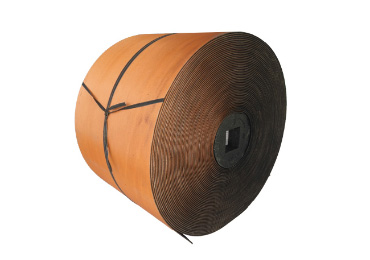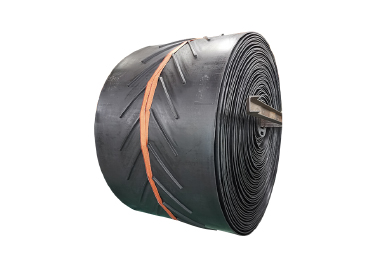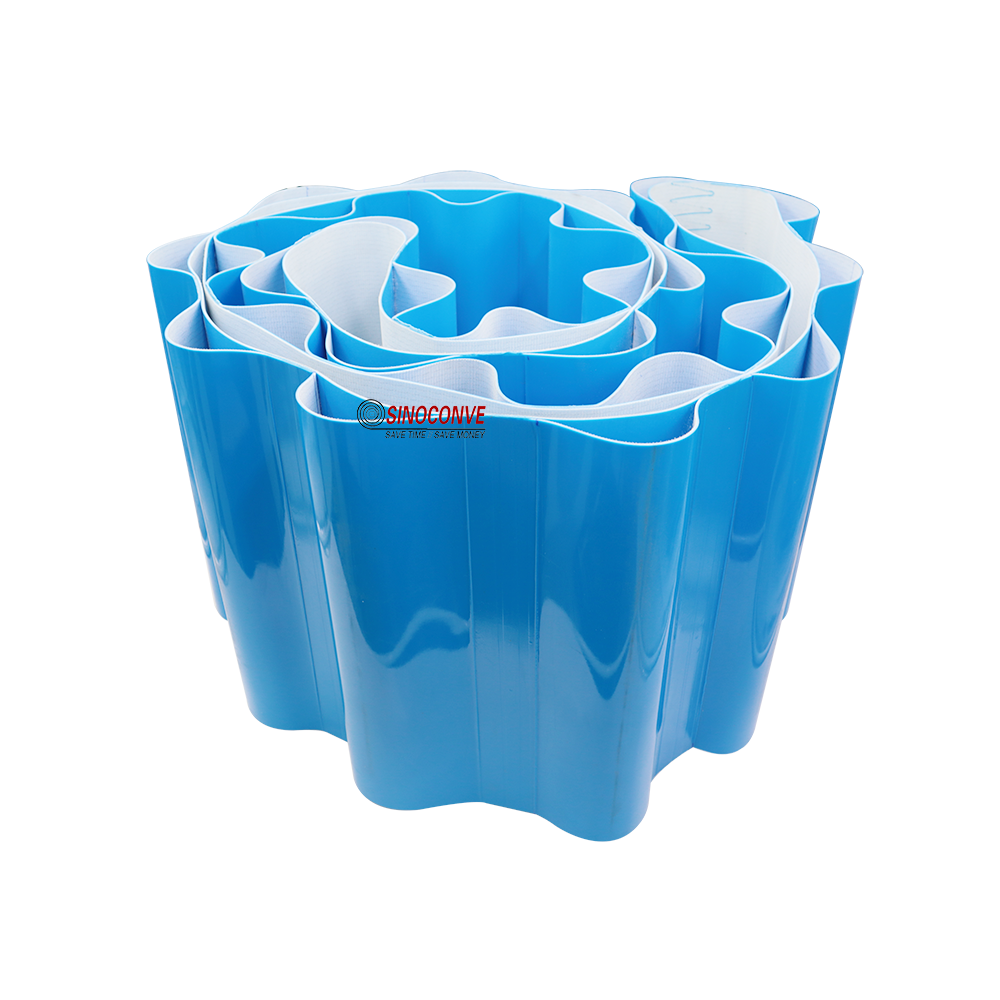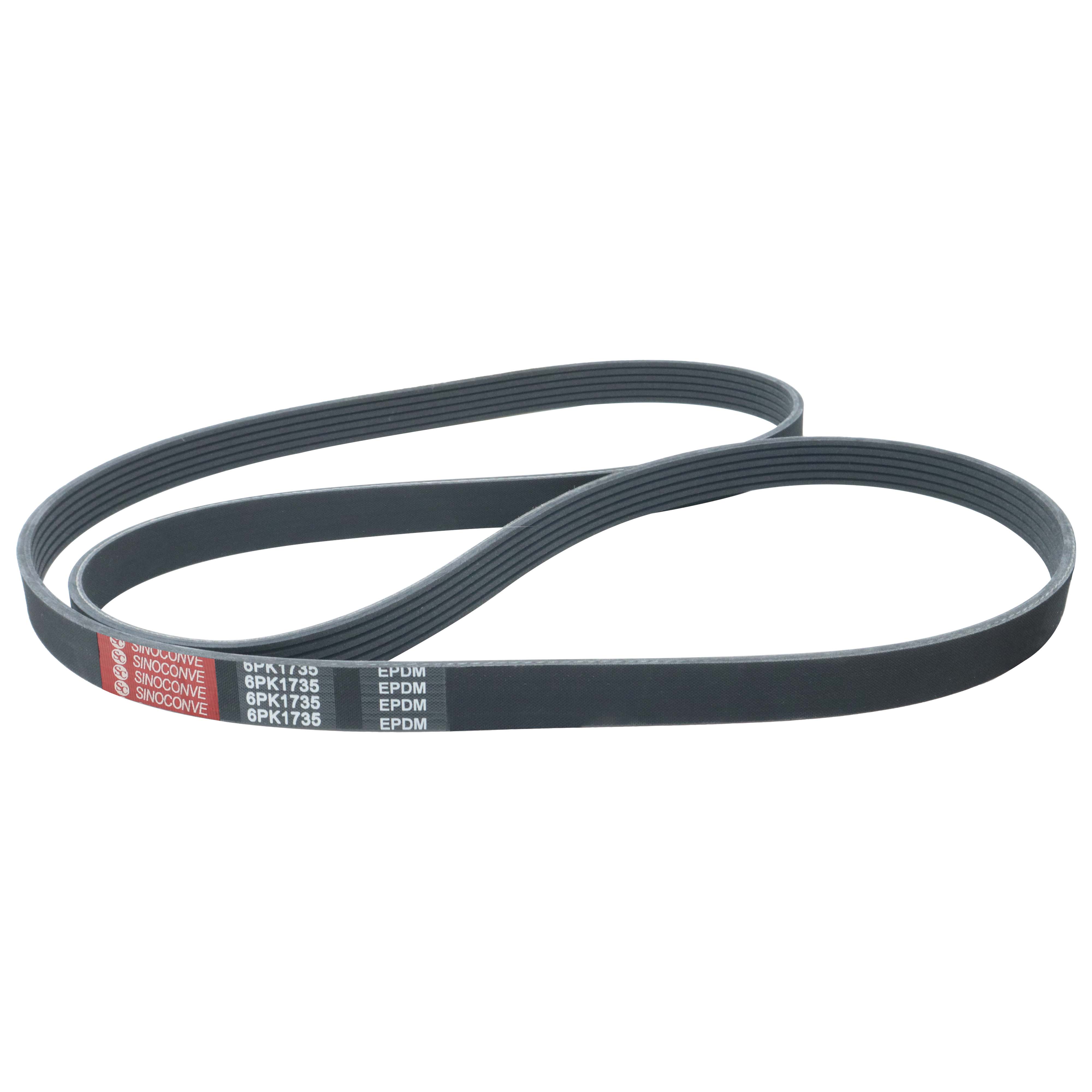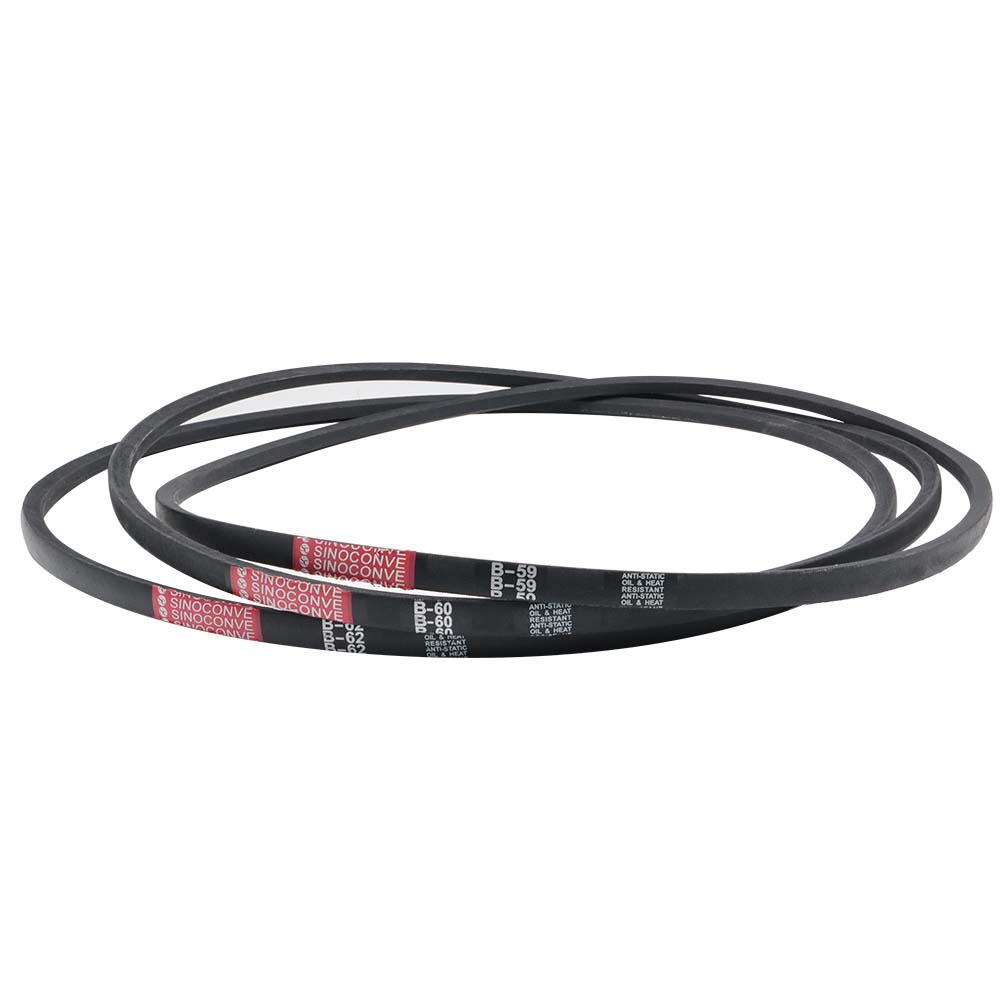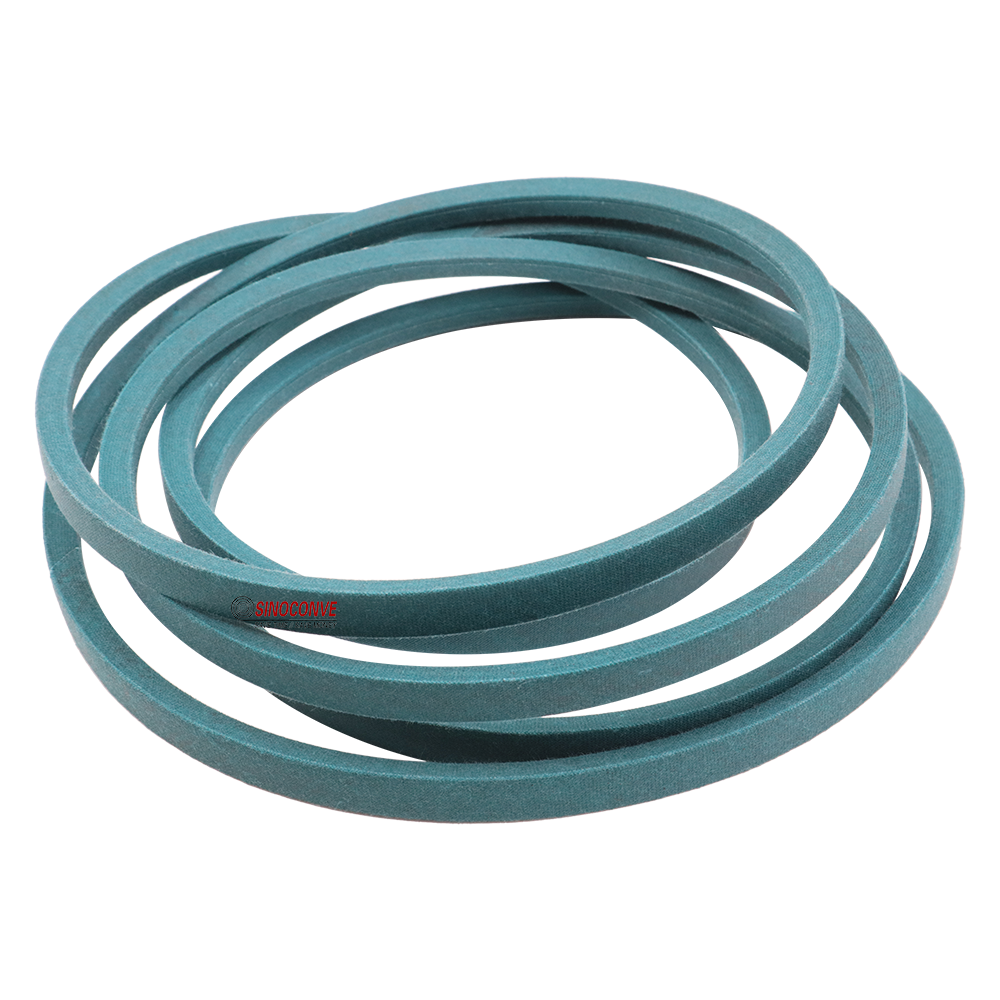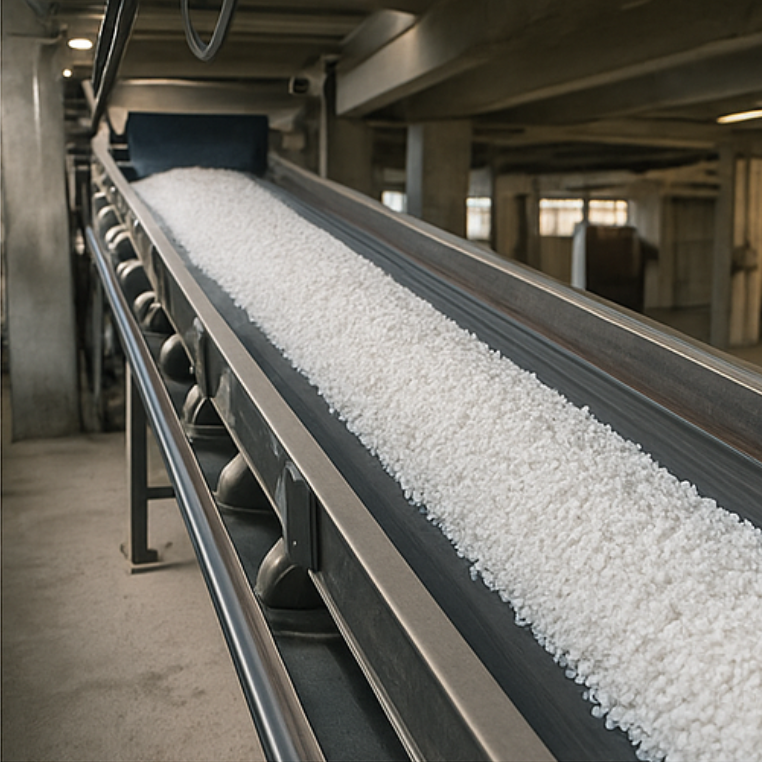
Chemical Resistant Conveyor Belts: Engineered for Harsh, Corrosive Environments
Why Chemical-Resistant Belts Matter
In industries where materials such as acids, alkalis, solvents, salts, fertilizers, or waste sludge are handled, chemical attack can quickly degrade standard rubber conveyor belts—causing surface cracking, layer separation, and premature failure.
A chemical-resistant conveyor belt is specifically formulated with non-reactive rubber compounds and specialized cover layers that withstand continuous exposure to corrosive substances—without losing structural integrity or flexibility.
Key Features of Chemical-Resistant Belts
-
Acid and Alkali Resistance
Protective cover compounds resist HCl, H₂SO₄, NaOH, NH₃, and other corrosives, minimizing swelling and erosion. -
Anti-Penetration Structure
Dense rubber cover prevents chemical absorption and keeps fluids from seeping into fabric plies or steel cords. -
Thermal-Chemical Stability
Maintains performance in environments combining heat + chemical vapors (50°C–120°C ranges). -
Flexible Design Options
Available in EP fabric, NN fabric, or steel cord carcass depending on load and layout. -
Optional Fire Retardancy
For environments such as chemical recycling or waste processing where heat + chemicals coexist.
Common Applications for Chemical-Resistant Belts
These belts are widely used in industries where leaching, spraying, or exposure to reactive materials occurs during conveying:
Chemical Manufacturing Plants
-
Handling of powders, granules, and chemical raw materials
-
Exposure to sulfuric acid, caustic soda, and chlorides during dosing and batching
Fertilizer Production Lines
-
Transport of phosphate, potash, urea, ammonium nitrate—especially under high humidity or dust
-
Belt cleaning systems must handle acidic water spray and abrasive residues
Wastewater Treatment Facilities
-
Sludge belt press output, lime dosing, flocculant dosing areas
-
Belts exposed to low-pH or high-pH filtrates and gasified chemicals
Battery and Electronics Recycling
-
Conveying lithium batteries, plastics with heavy metals, acid-soaked fragments
-
Belt must resist chemical attack + withstand sharp metal content
Laboratory and Pharmaceutical
-
Cleanroom conveyor systems for chemically reactive processes
-
Non-staining, anti-absorption covers required
What Materials Are Used?
Sinoconve’s chemical-resistant belts use specialized rubber cover formulations based on:
| Compound Type | Best For |
|---|---|
| Chloroprene (CR) | Balanced acid/alkali resistance and weatherproofing |
| Butyl Rubber (IIR) | Excellent gas/acid impermeability |
| EPDM | High resistance to oxidizing agents (e.g., bleach, peroxides) |
| Nitrile Rubber (NBR) | Ideal for oils + alkalis combination |
| PVC Blends | For lightweight, anti-chemical indoor systems |
The choice of cover compound, fabric carcass, and cleat/sidewall bonding depends on the system layout and chemical exposure level.
Key Selection Criteria
When specifying a chemical-resistant conveyor belt, consider the following:
| Selection Area | Guideline |
|---|---|
| Chemical Type | Acidic, alkaline, oxidizing, solvent-based, etc. – each reacts differently with rubber |
| Exposure Method | Continuous immersion, occasional spray, gas-phase exposure, dust settling |
| Operating Temperature | Some chemical reactions accelerate with heat—match belt compound accordingly |
| Conveyor Layout | Horizontal, inclined, troughing, or closed system? Choose belt stiffness accordingly |
| Belt Cleaning System | Use sealed edges and smooth covers for belts exposed to CIP (clean-in-place) spraying |
| Safety Compliance | For food or pharma chemical use, request non-toxic, FDA-grade options |
Why Choose Sinoconve’s Chemical Resistant Belts?
Sinoconve manufactures chemical-resistant belts with:
-
Tailored rubber formulations tested against 50+ industrial chemicals
-
Available in EP100–EP400 fabric or steel cord models
-
Cover hardness options from 45–80 Shore A depending on resistance level
-
Precision-molded cleats and sealed sidewalls for inclined chemical systems
-
Heat + acid + oil + fire resistance in combination as needed
-
SGS and ISO-certified processes
We serve chemical plants, battery recyclers, wastewater processors, and fertilizer lines across 100+ countries.
Don’t Let Corrosive Materials Destroy Your Conveyor System
A standard belt won’t survive a chemical plant. Protect your operation with a belt designed to resist the chemicals you use every day.
If you are looking for this type of conveyor belt or want to learn more, please visit our product page or contact us directly. We will get back to you within 24 hours.

